How is Inheritance Explained - AOS2 - Chapter 7 & 8 - VCE Biology Flashcards (copy)
1/159
Earn XP
Description and Tags
Name | Mastery | Learn | Test | Matching | Spaced |
|---|
No study sessions yet.
160 Terms
DNA stands for…
Deoxyribonucleic acid
Genetic material in prokaryotic cells
Single chromosome
Circular DNA & RNA
Free-floating in the cytoplasm in an area called the nucleoid region
Have plasmids (small rings of DNA)
Genetic Material in Eukaryotic Cells
More than one chromosome (23 in humans)
DNA in the form of condensed linear chromosomes
Located within the nucleus of the cell
DNA also located in mitochondria and chloroplasts
DNA is…
An information molecule that encodes the instructions for the synthesis of proteins
Structure of DNA as a polymer
Nucleic acid is a polymer composed of monomers called nucleotides
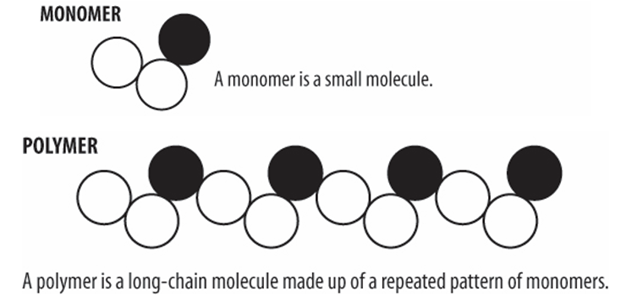
Structure of DNA Nucleotides
Deoxyribose Sugar (Deoxygenised pentose sugar)
Phosphate molecule
1 of 4 nitrogenous bases (Adenine, Thymine, Guanine and Cytosine)
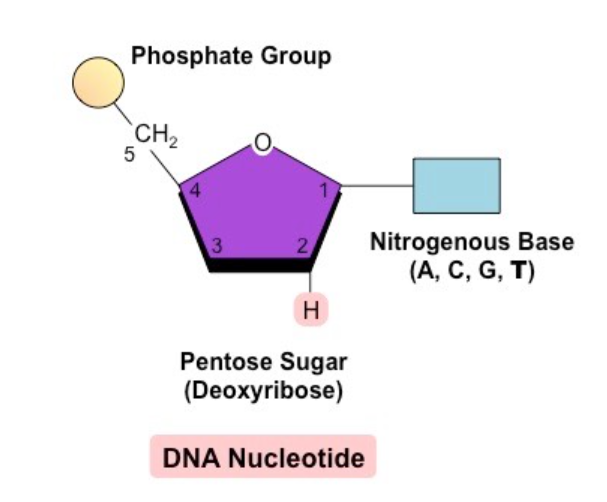
Structure of RNA nucleotides
Ribose sugar (Oxygenised pentose sugar)
Phosphate molecule
1 of 4 nitrogenous bases (Adenine, Uracil, Cytosine and Guanine)

The sugar and phosphate group in an RNA or DNA molecule form the…
Sugar-phosphate backbone
Purines
Double-ringed nitrogenous bases
Adenine, Guanine
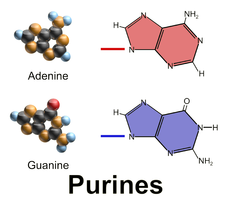
Pyrimidines
Single-ringed nitrogenous bases
Thymine, Cytosine and Uracil (RNA)
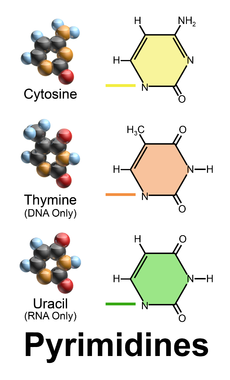
Complementary Base Pairing in DNA
Adenine (A) → Thymine (T)
Cytosine (C) → Guanine (G)
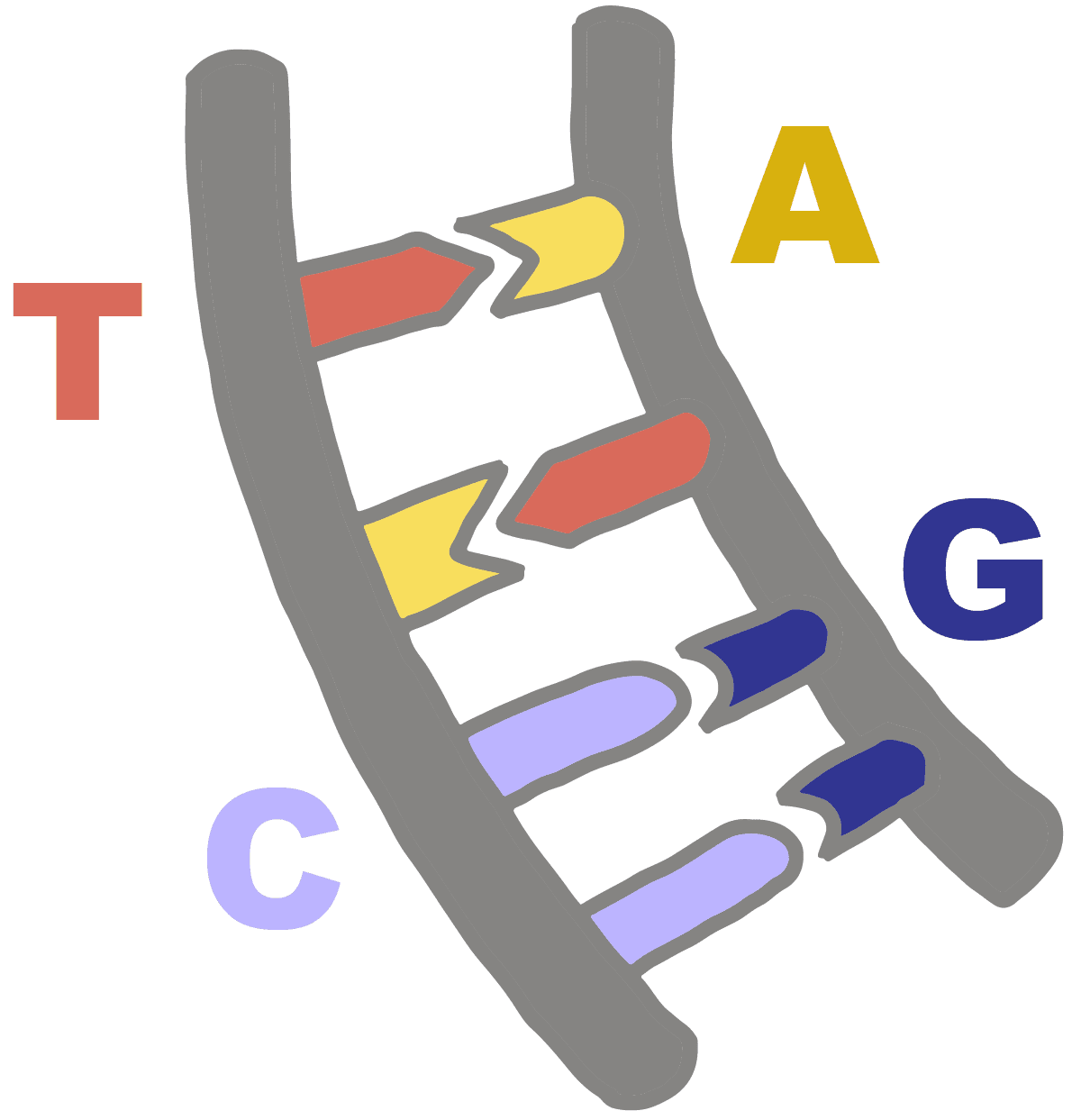
Complementary Base Pairing in RNA
Adenine (A) → Uracil (U)
Cytosine (C) → Guanine (G)
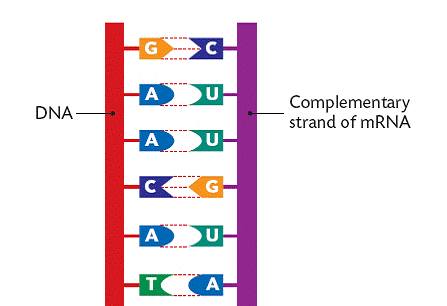
DNA Molecule Structure
DNA forms a double helix, with 2 antiparallel strands joined together by base pairing
Weak hydrogen bonds form between the complementary nitrogenous bases
Charge of DNA
Negatively charged due to the phosphate group and oxygen atoms
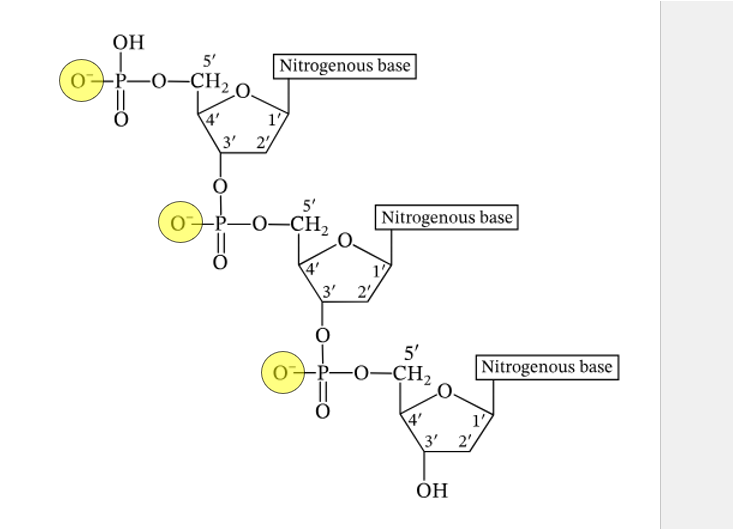
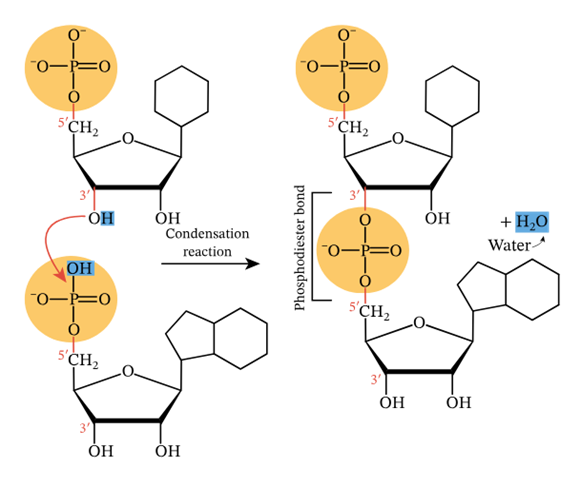
Phosphodiester Bonds
Occur as a result of condensation polymerisation reactions between the nucleotides
Phosphodiester bonds form between the sugar and phosphate of the 2 nucleotides
(Bottom of the sugar and above the phosphate group)
Water is lost as a result of the condensation polymerisation reaction
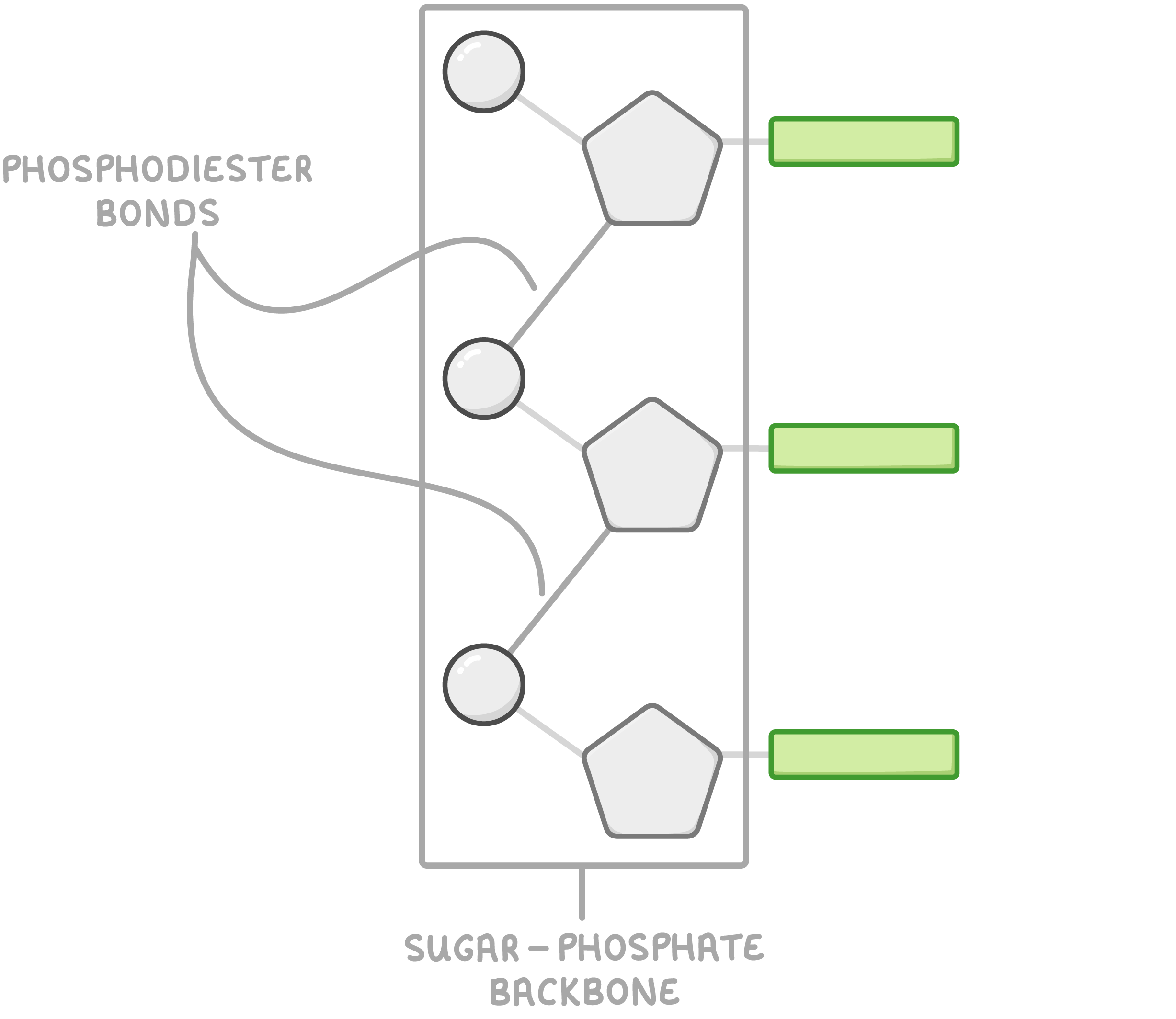
Antiparallel Strands (5’ and 3’ ends)
The end with the unlinked phosphate group is called the 5’ end
The end with the unlinked sugar is called the 3’ end

Differences in RNA and DNA
DNA
Composed of deoxyribose pentose sugars
Double stranded molecule
Has the nitrogenous bases Adenine, Thymine, Guanine and Cytosine
RNA
Composed of ribose pentose sugars
Single stranded molecule
Has the nitrogenous base Uracil in the place of Thymine
Types of RNA
mRNA (messenger RNA)
tRNA (transfer RNA)
rRNA (ribosomal RNA)
mRNA function
Carries transcribed genetic information from nucleus to the ribosomes for protein synthesis.
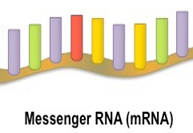
tRNA function
Delivers specific amino acids to the ribosome and recognises specific nucleotide sequences (codons) on mRNA that are complementary to its own anticodon.
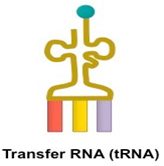
rRNA function
Structural component of ribosomes within the cells
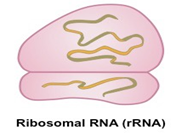
Genome
The sum total of an organism’s DNA, measured in the number of base pairs contained in a haploid set of chromosomes.
Ex. In the human genome there approximately 3 billion base pairs which are organised into 23 chromosomes
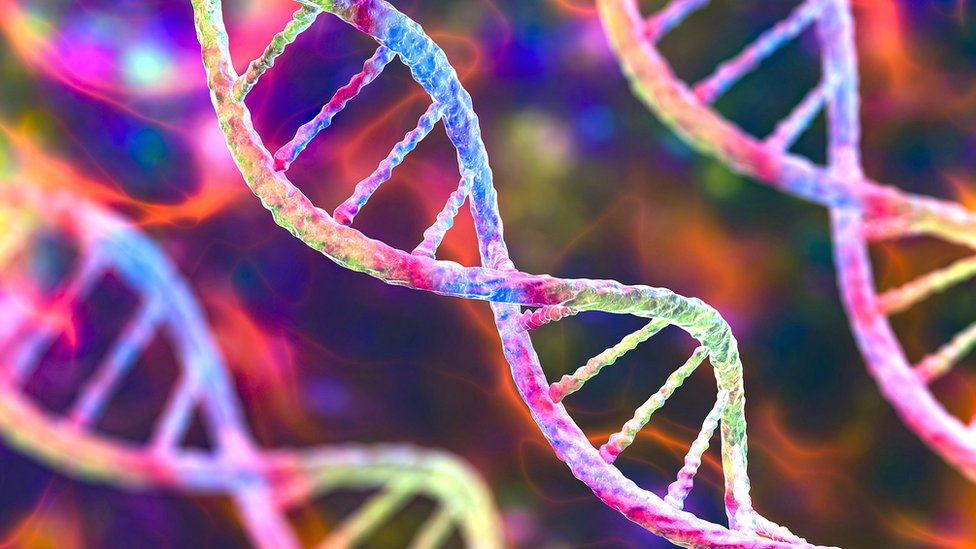
Genomics
The study of genes and their function
Gene
A section of DNA that codes for making a protein
Ex. Gene for ability to roll tongue
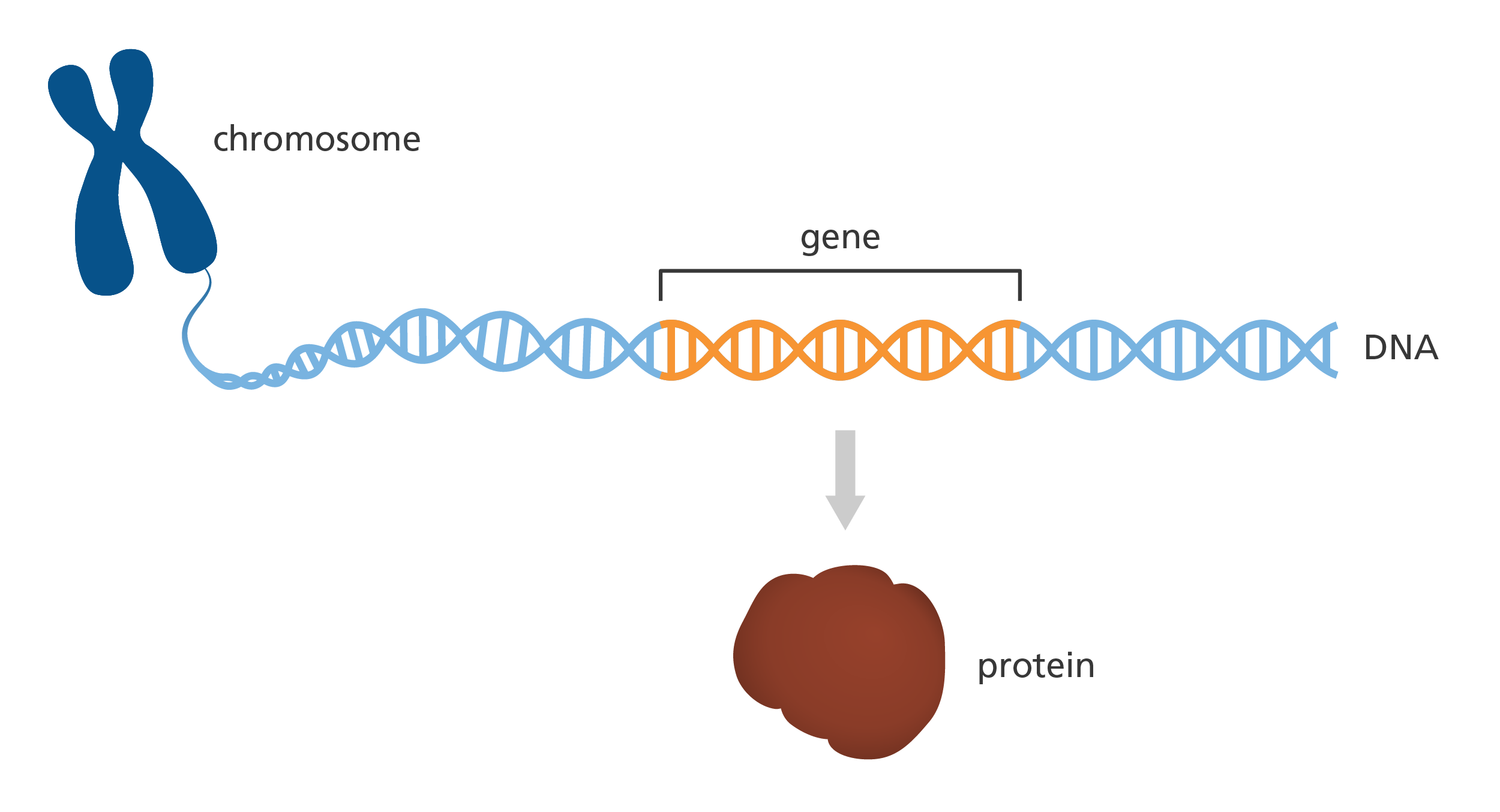
Allele
A variation or alternative form of a gene
Ex. The gene for tongue rolling has 2 alleles
R - can roll tongue
r - cannot roll tongue
Links between genome, gene and allele
The genome is the entire set of genetic information within an organism
Within the genome, genes are specific sequences of DNA that code for specific proteins and determine traits.
Each gene can have multiple alleles (variations) which lead to different traits being expressed
Universality of DNA
All living organisms inherit DNA from their parents
(half from mother and half from father)
The structure of DNA is the same in all organisms; only the sequence of nucleotides differs between species.
Heredity
The passing on of traits (via DNA) from parent to offspring
Genetics
The study of the mechanisms and patterns of inheritance through the passing of genetic information from one generation to the next
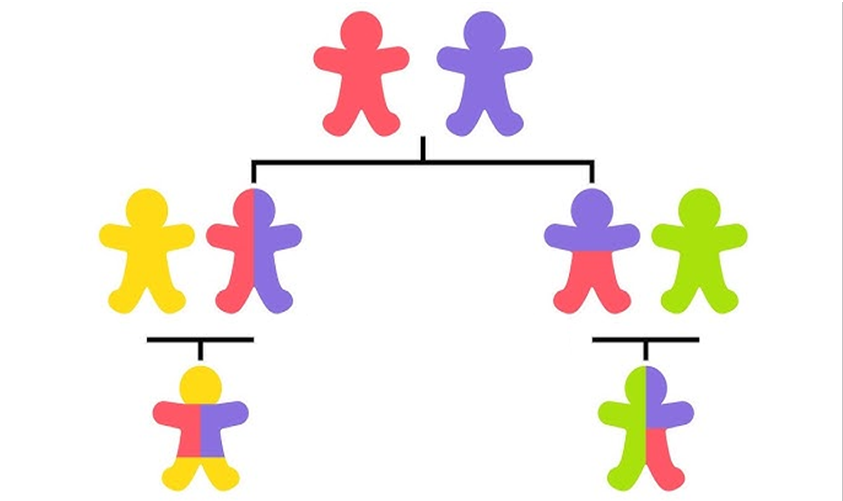
Chromatin and Chromosomes
When DNA tightly coils around histone proteins, chromatin is created
As chromatin continues to condense, chromosomes form
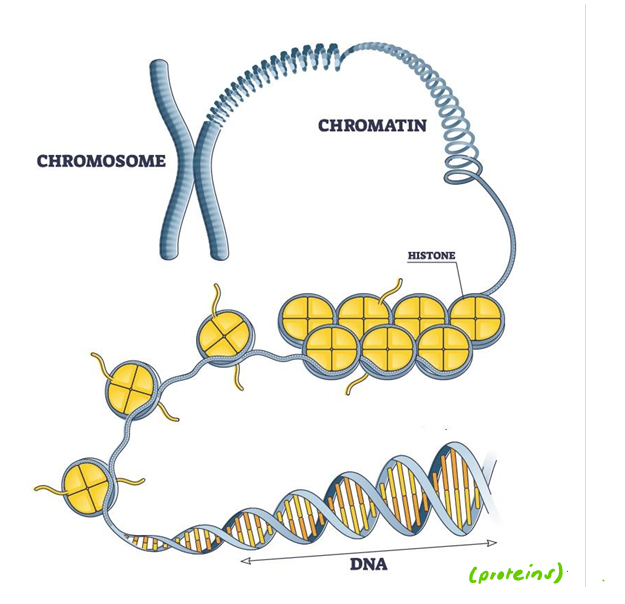
Parts of a chromosome
Telomeres*
Short arm
Centromere*
Long arm
Sister chromatids*
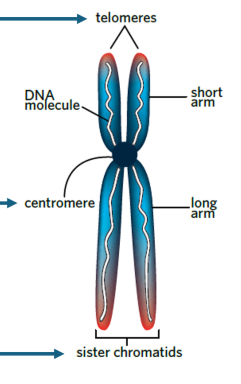
Telomeres
Repetitive base sequences at the end of every chromosome.
Protects the ends of the chromosome from fusing with other chromosomes
Centromere
The point at which 2 chromatids are held together
Chromatids
A single, individual, unduplicated strand of DNA
Each chromatid can also be referred to as a chromosome

Sister Chromatids
2 Identical/duplicated strands of DNA joined at the centromere
Are not homologous to each other
Can also be referred to as a chromosome
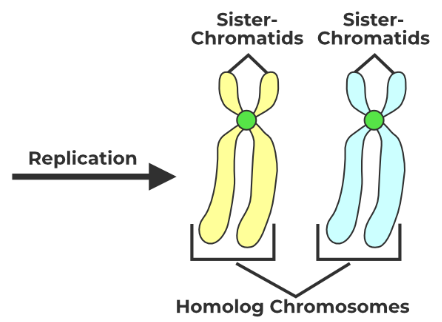
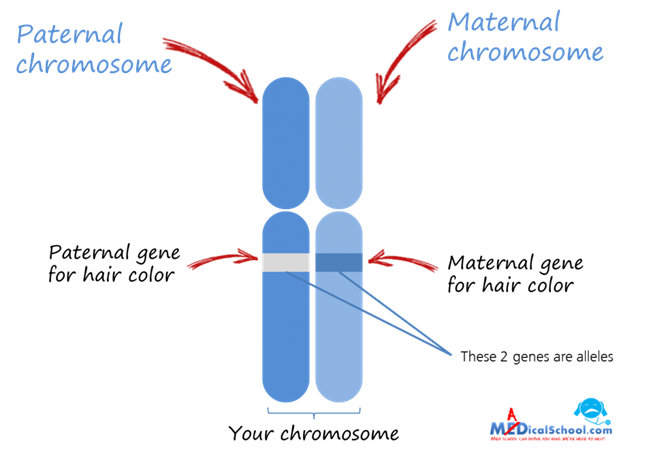
Homologous Chromosomes
Composed of one maternal and one paternal chromosome and have the same genes at the same gene loci
Ex. Maternal and paternal chromosome 11
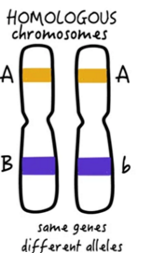
Non-homologous Chromosomes
Have different genes at the same gene loci
Ex. Chromosomes 8 and 16
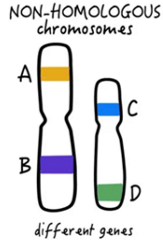
Number of Chromosomes in Humans
46 (23 pairs of) chromosomes
Types of Chromosomes in Humans (Autosomes and Sex Chromosomes)
Autosomes (Pairs 1-22)
Involved in cellular functions
Sex Chromosomes (Pair 23)
Determines the biological sex of the organism
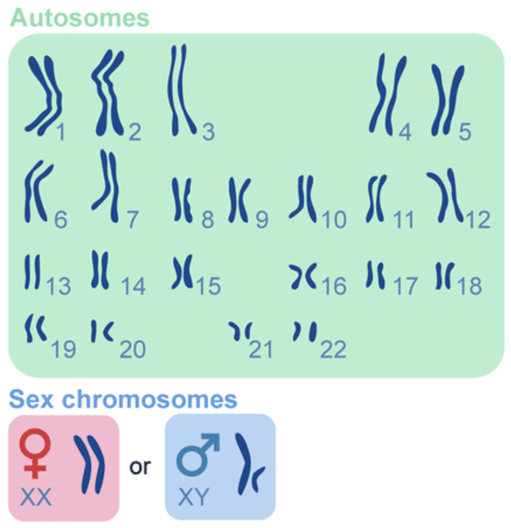
Somatic Cells
Cells of the body other an sex cells
Ex. muscle cells, nerve cells, red blood cells etc.
Contain 46 chromosomes (Diploid 2n - one chromosome inherited from each parent)
Produced by mitosis

Gametes (Sex Cells)
Reproductive cells that arise from germline cells and contain half of the genetic material of a somatic cell
Ex. Ova in females and sperm in males
Located/produced in the gonads
Contain 23 chromosomes (haploid n)
Produced by meiosis
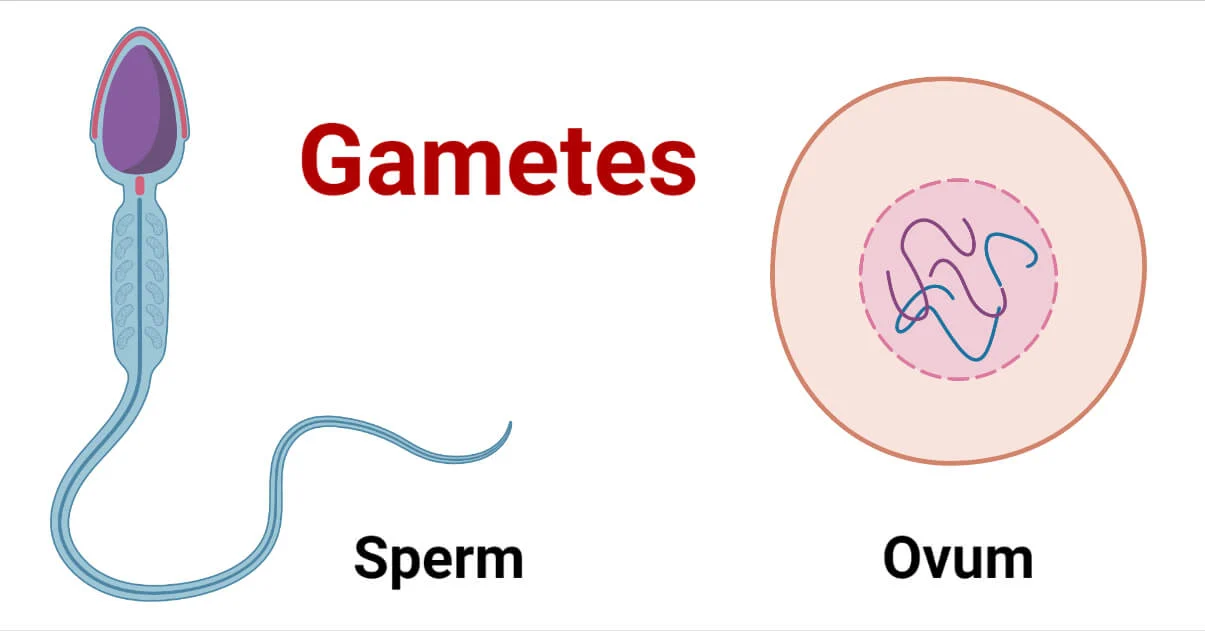
Gonads
Organs that produce gametes from germline cells
Males - sperm (gamete) produced in testes (gonad)
Females - Ova (gamete) produced in ovaries (gonad)
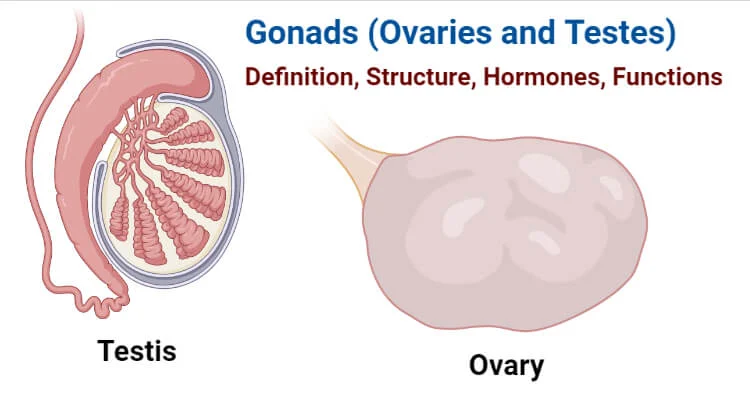
Haploid
Describes a single set of chromosomes within a cell
Noted by n = 23 in humans
Gametes
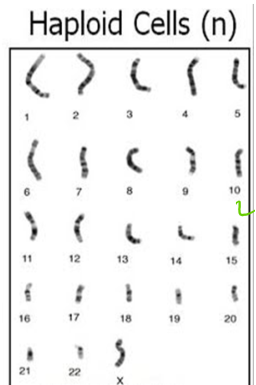
Diploid
Describes 2 sets of chromosomes within a cell (one from each parent)
Noted by 2n = 46 in humans
Somatic cells
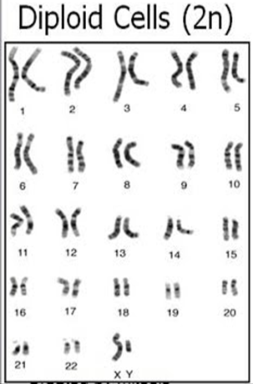
Variability of chromosomes in terms of size and number in different organisms
Different organisms have different numbers of chromosomes and genes
Chromosomes can be different sizes
The number of chromosomes is not correlated to the complexity of the organism
Karyotype
An image of an organism's complete set of chromosomes in a cell, arranged in pairs from largest to smallest
Karyotypes show…
The number of chromosomes in each cell
Determines species (23 pairs in humans)
Genetic sex
Male (XY) or Female (XX)
Chromosomal abnormalities (from extra or missing chromosomes)
Monosomy at chromosome pair 21 indicates Down’s Syndrome
How are homologous chromosomes matched/paired in a karyotype?
Banding pattern
Centromere position
Length of chromatids
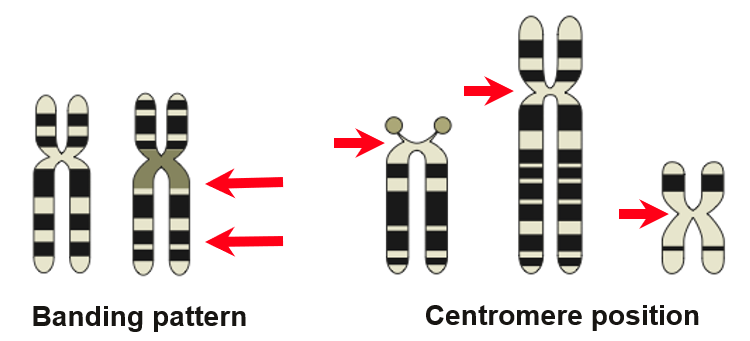
Indications of Females and Males on Sex Chromosomes
XX - female
XY - male
Aneuploidy
The addition or loss of an individual chromosome from a cell
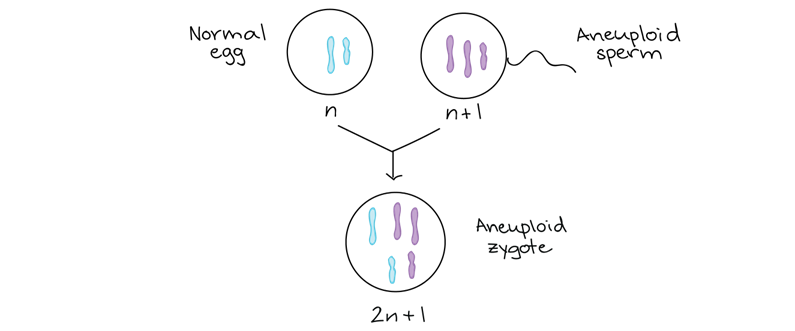
Aneuploidy occurs as a result of…
Non-disjunction at anaphase stage in meiosis - failure to separate homologous chromosomes
Non-disjunction at Anaphase 1 results in…
2 gametes with a chromosome missing
2 gametes with an extra chromosomes
No normal gametes are produced
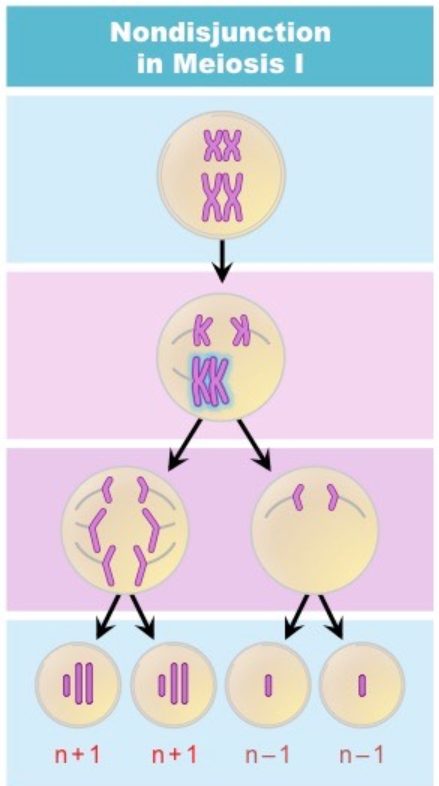
Non-disjunction at Anaphase 2 results in…
1 gamete with a chromosome missing
1 gamete with an extra chromosome
2 normal gametes
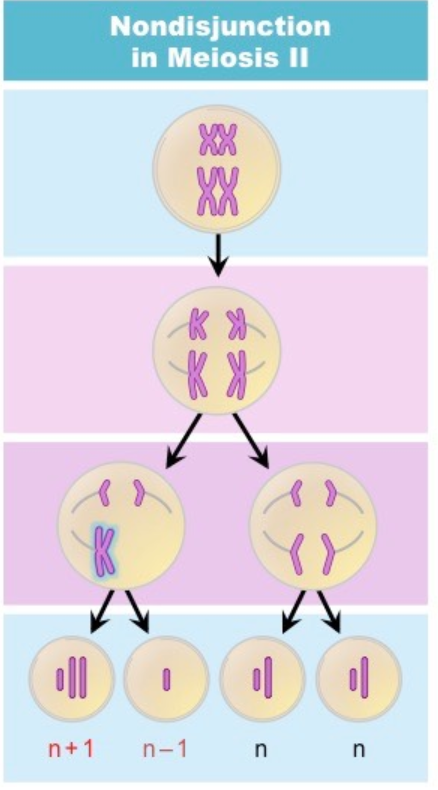
Gametes with a chromosome missing are…
Infertile, and will therefore not result in a baby
Types of Aneuploidy
Monosomy
Only one copy of a particular chromosome
One missing chromosome
Represented as 2n-1
Trisomy
Three copies of a particular chromosome
One extra chromosome
Represented as 2n+1
Examples of Aneuploidy Chromosomal Abnormalities
Down Syndrome (trisomy at pair 21)
Patau’s Syndrome (trisomy at pair 13)
Edwards Syndrome (trisomy at pair 18)
Klinefelter Syndrome (XXY - Trisomy at sex chromosomes)
Turner’s Syndrome (X only - Monosomy at sex chromosomes)
Monoploidy
When the nucleus of a somatic cell of an organism has only one set of chromosomes.
Are not considered haploid because their chromosomes represent a single, complete and operational set
Represented by n
Found in; ants, bees, fungi and algae, some fish, reptiles and amphibians
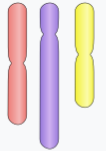
Monoploidy Disadavantage
Any defective allele is the only copy for a particular gene, therefore being diploid is an advantage.
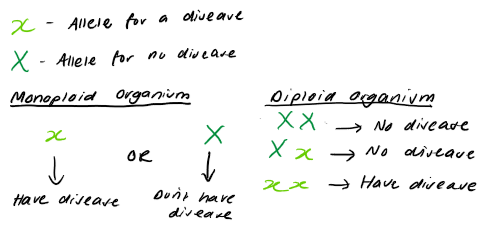
Polyploidy
3 or more sets of chromosomes in an organism’s nucleus.
Ex. 3n, 4n, 5n, 6n, 7n etc.
Lethal in humans
Found in; flowering plants, ferns and green algae, some fungi, fish and amphibian species
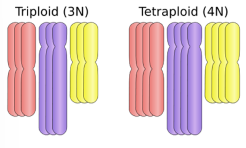
Polyploidy Advantage
More hardy, bigger fruit
Deeper roots to make them more resistant to environmental conditions
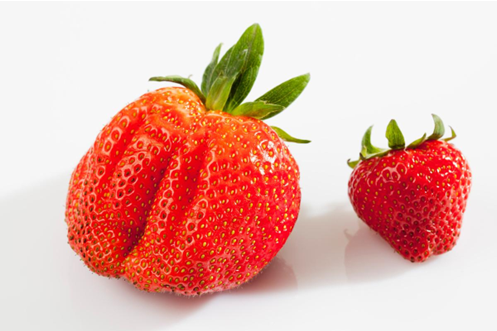
Polyploidy Disadvantage
Organisms that have an odd number of chromosome sets (e.g. 3n, 5n, 7n, etc.) are unable to produce gametes and are therefore infertile.
Sexual Reproduction
Involves the contribution of genetic material from 2 parents
Creates genetic diversity
Why do gametes (sex cells) need to be haploid?
Gametes are haploid because when the sperm and egg fuse during fertilisation, it ensures that the resulting zygote has 46 (23 pairs of) chromosomes and can therefore develop into a normal embryo/baby
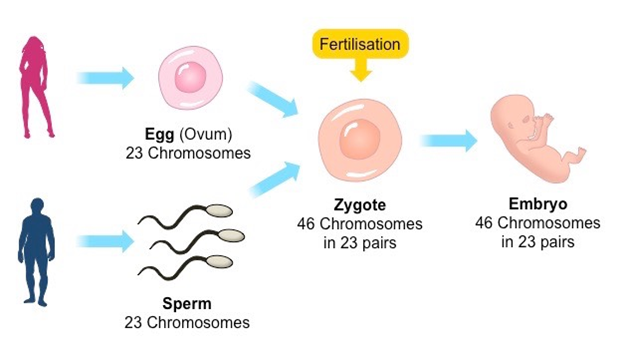
Production of gametes occurs through a type of cell division known as…
Meiosis
Meiosis
A reduction division, involving a reduction in the amount of genetic material from diploid (2n) to haploid (n)
Meiosis produces…
4 genetically different haploid daughter cells from one parent cell
Resulting haploid cells (gametes) from meiosis then develop into… via….
Males - 4 Sperm via Spermatogenesis
Females - Ova via Oogenesis
In one full round of meiosis, how many sex cells are produced?
Males - 4 sperm
Females - Only 1 viable egg and 3 polar bodies which later become absorbed
Germline cells
Cells that create gametes
Diploid (2n)
Where does Meiosis occur?
In the gonads (sex organs)
Testes (males)
Ovaries (females)
How many cycles of cell division are there in meiosis?
2 cycles
Meiosis 1
Meiosis 2
How many round of DNA replication are there in Meiosis?
1 Round of DNA replication at Interphase
Stages of Meiosis 1
(Isabelle pushes malnourished adolescents to Chennai)
Interphase
Prophase 1
Metaphase 1
Anaphase 1
Telophase 1
Cytokinesis 1
At interphase, DNA is in the form of…
Loose uncoiled chromatin
Centrosome/ Pair of centrioles
A pair of barrel-shaped organelles located in the cytoplasm which are essential for cell division
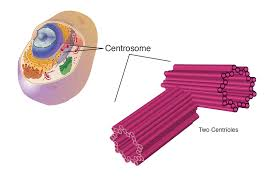
Mitotic Spindle/Spindle Fibres
A structure composed of microtubules from centrioles which attach to centromeres of a chromosome and help spilt/pull them apart
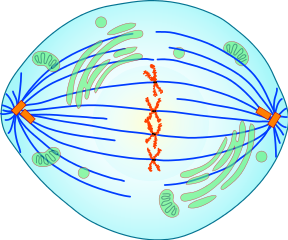
Interphase
Cell grows and undergoes normal biochemical processes
G1 - Cell growth
Organelles replicate
Proteins synthesised
S Phase - Synthesis
DNA duplicates creating 92 sister chromatids from 46 sister chromatids
G2 Phase - Cont. Cell growth
Continued synthesis of proteins for meiosis
Prophase 1
Nuclear membrane and nucleolus break down
Chromatin condenses and becomes visible, creating replicated chromosomes (2 chromatids) held by a centromere
Spindle fibres begin to form from the centrioles at opposite poles of the cell
Crossing-over of maternal and paternal alleles between homologous chromosomes occur during the latter part of this stage (creates genetic variation)
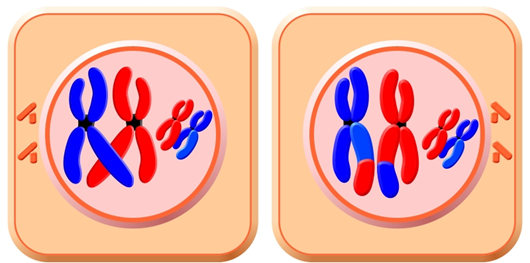
Crossing Over
The exchange of paternal and maternal alleles (segments of DNA) from non-sister chromatids/homologous chromosomes, creating recombinant chromosomes in daughter cells.
Occurs at a position on the chromosome called the chiasma
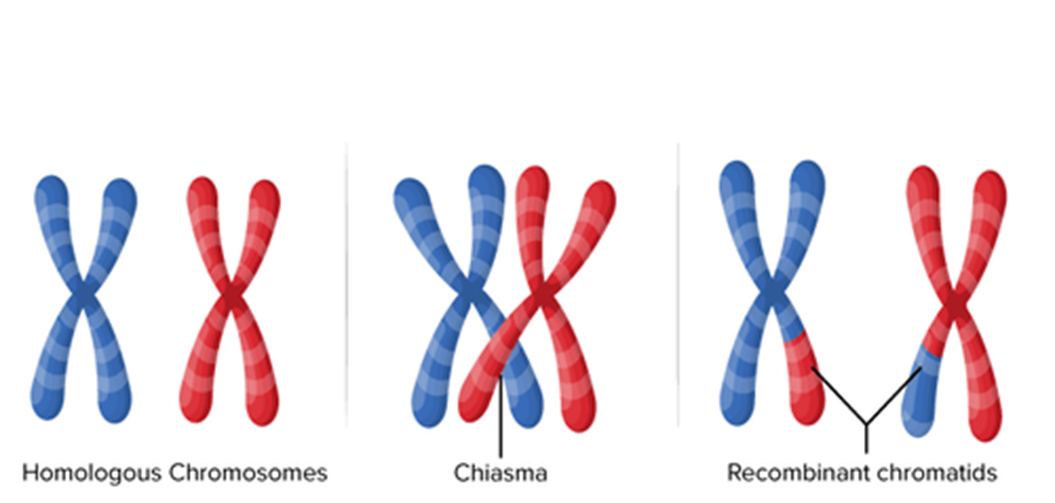
Importance of Crossing Over
Important source of genetic variation
All 4 daughter cells will have a different composition of alleles, making each each gamete genetically unique from each other
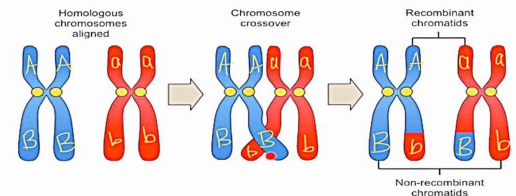
Metaphase 1
Homologous pairs of chromosomes line up in 2 files along the equator of the cell in random order (independent assortment - creates genetic variation)
Spindle fibres attach to the centromere of each homologous pair
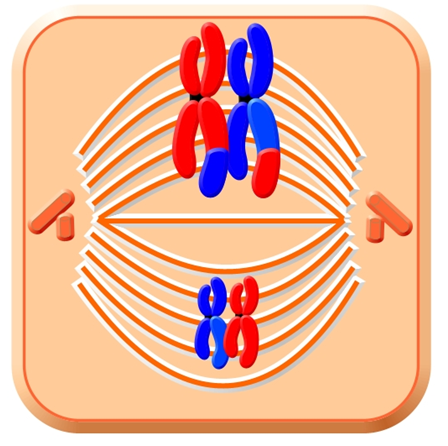
Independent Assortment
The random alignment of the homologous chromosomes along the equator of the cell
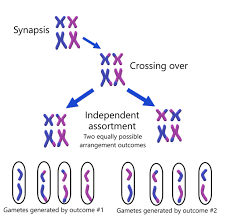
Importance of Independent Assortment
Important source of genetic variation
The random alignment of homologous chromosomes give rise to different chromosome combinations in the resulting 4 gametes

Anaphase 1
Spindle fibres contract, pulling the homologous chromosomes to opposite poles of the cell
Recombinant sister chromatids held by the centromere remain intact
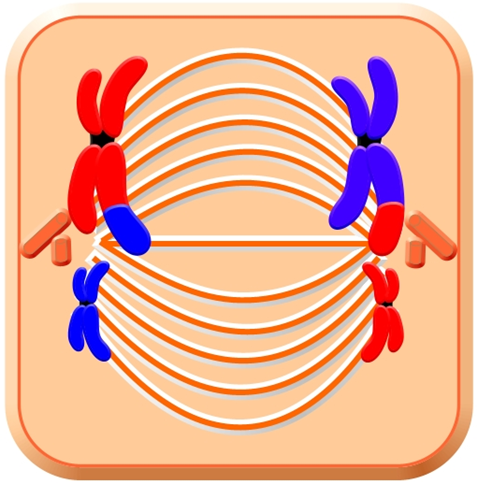
Telophase 1
Spindle fibres disintegrate
Two new nuclei form
Nuclear membrane forms around chromosomes at opposite poles of the cell, creating two immediate daughter cells
Cells begin to pinch in and cytoplasm divides as a cleavage furrow is formed for the cell to undergo cytokinesis
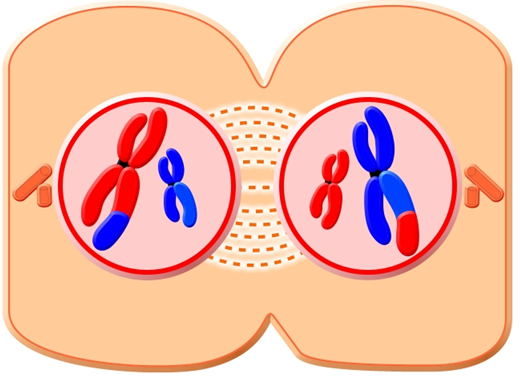
Cytokinesis 1
Cells separate into 2 haploid daughter cells
Chromosomes uncoil back into loose chromatin
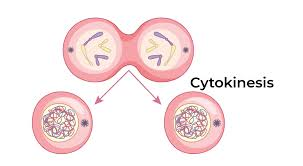
Stages of Meiosis 2
(Isabelle Pushes Malnourished Adolescents to Chennai)
Prophase 2
Metaphase 2
Anaphase 2
Telophase 2
Cytokinesis 2
Excludes Interphase and continues from Meiosis 1
Prophase 2
NO DNA replication
Chromatin re-condenses and becomes visible, forming 46 sister chromatids or 23 chromosomes
Nuclear membrane and nucleolus break down
Spindle fibres begin to form from the centrioles at opposite poles of the cell
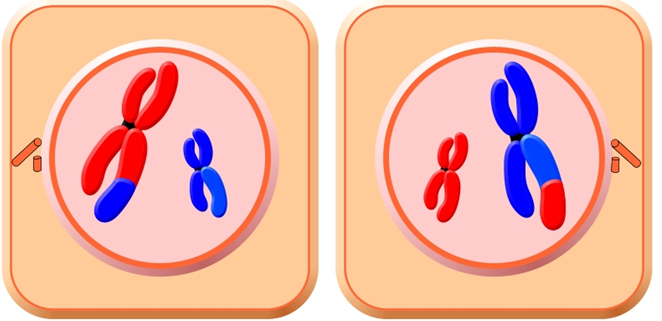
Metaphase 2
Homologous pairs of chromosomes line up in a single file along the equator of the cell in random order (independent assortment - creates genetic variation) across both cells
Spindle fibres attach to the centromere of each homologous pair
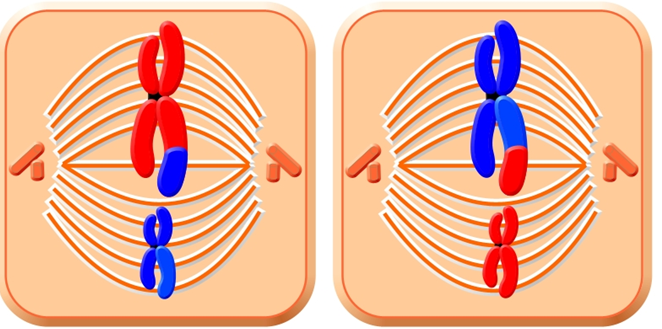
Anaphase 2
Spindle fibres contract, splitting the recombinant sister chromatids at the centromere and pulling the chromatids to opposite poles of the cell
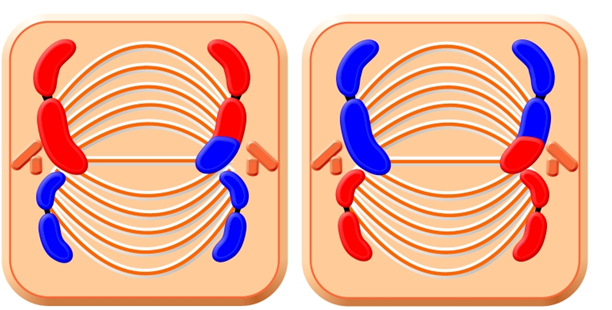
Telophase 2
Spindle fibres disintegrate
4 new nuclei form
Nuclear membranes form around the chromosomes at opposite poles of each cell, creating 4 immediate daughter cells
Cells begin to pinch in and cytoplasm divides as a cleavage furrow is formed on both cells to undergo cytokinesis
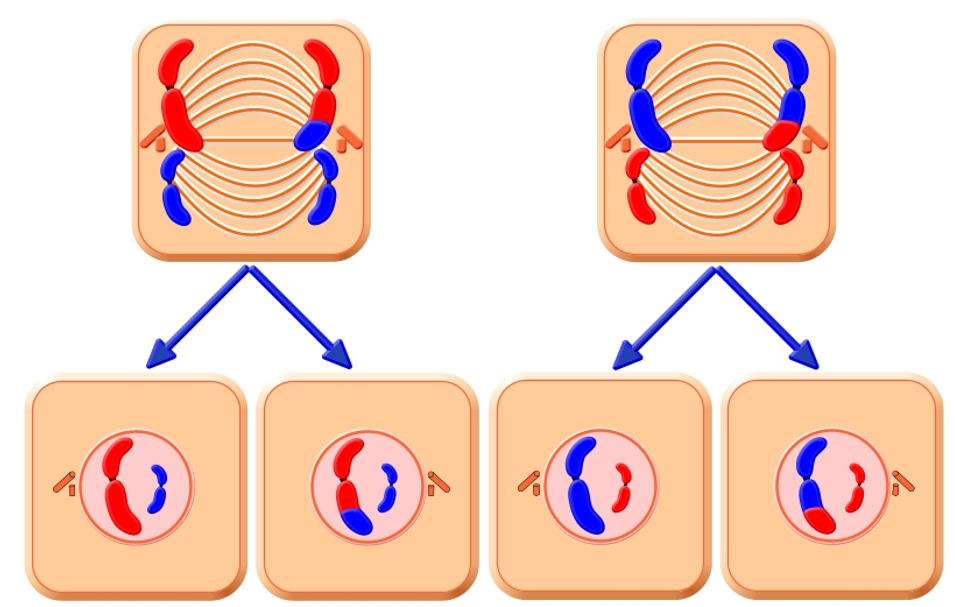
Cytokinesis 2
Cells separate into 4 haploid daughter cells
Chromosomes uncoil back into loose chromatin
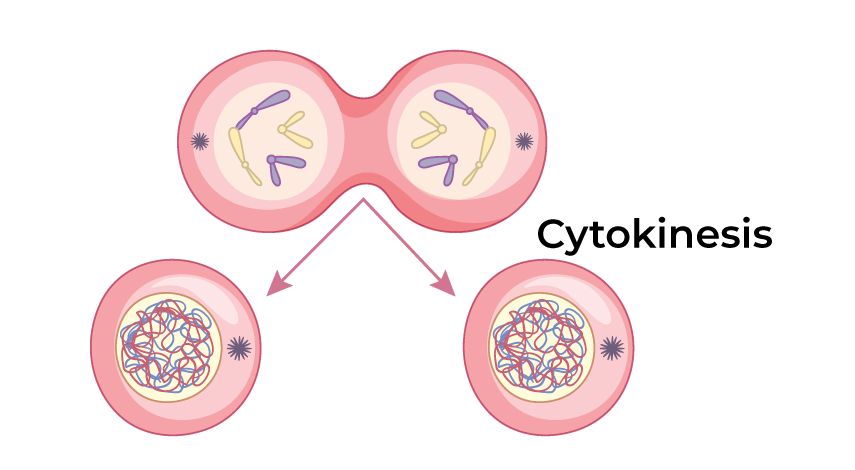
Similarities in Mitosis and Meiosis
Occur in eukaryotic cells only
Both begin with a diploid cell
Have the same stages (interphase, prophase, metaphase, anaphase, telophase and cytokinesis)
Use spindle fibres to separate chromsomes
Differences in Meiosis and Mitosis
Mitosis
Purpose: Growth and repair
Rounds of division: 1
Number of daughter cells: 2
Daughter cell Type: Identical to parent cell (Diploid 2n)
Maintains chromosome number (2n → 2n)
Occurs in somatic cells
Meiosis
Purpose: Produce gametes for sexual reproduction
Rounds of division: 2
Number of daughter cells: 4
Daughter Cell Type: Genetically unique to parent cell (Haploid n)
Reduces Chromosome number (2n → n)
Occurs in gonads
Crossing Over and Independent Assortment in Meiosis creates…
Infinite genetic variation in the haploid gametes produced
How do genes determine traits from the mother and father?
One set of chromosomes is inherited from the mother and one set is inherited from the father
These chromosomes contain genes which are inherited by the offspring
How are alleles (dominant and recessive) represented?
By a single letter
Capital letter indicates the dominant allele
Lowercase letter indicates the recessive allele
Ex.
The letter “A” represents petal colour
A - Dominant purple petals
a - Recessive white petals
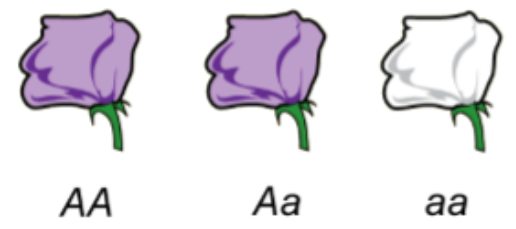
Homozygote
When the two alleles inherited from each parent are the same in an organism
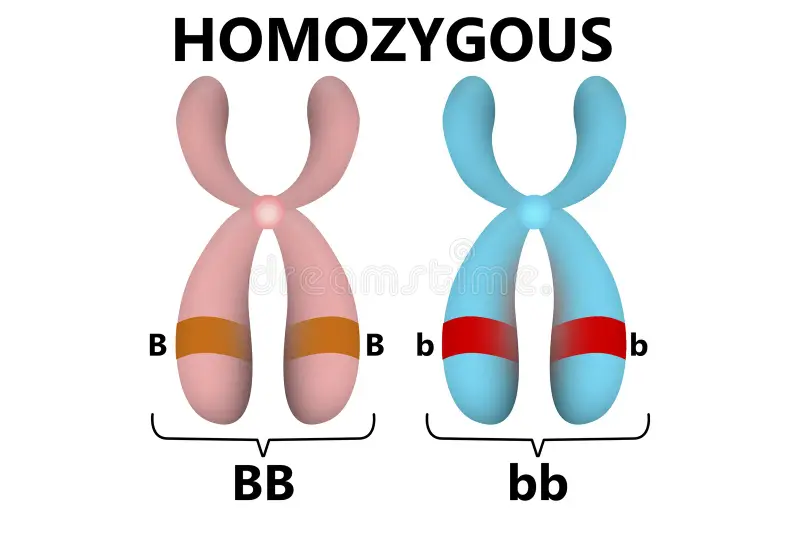
Heterozygote
When the two alleles inherited from each parent are different in an organism
